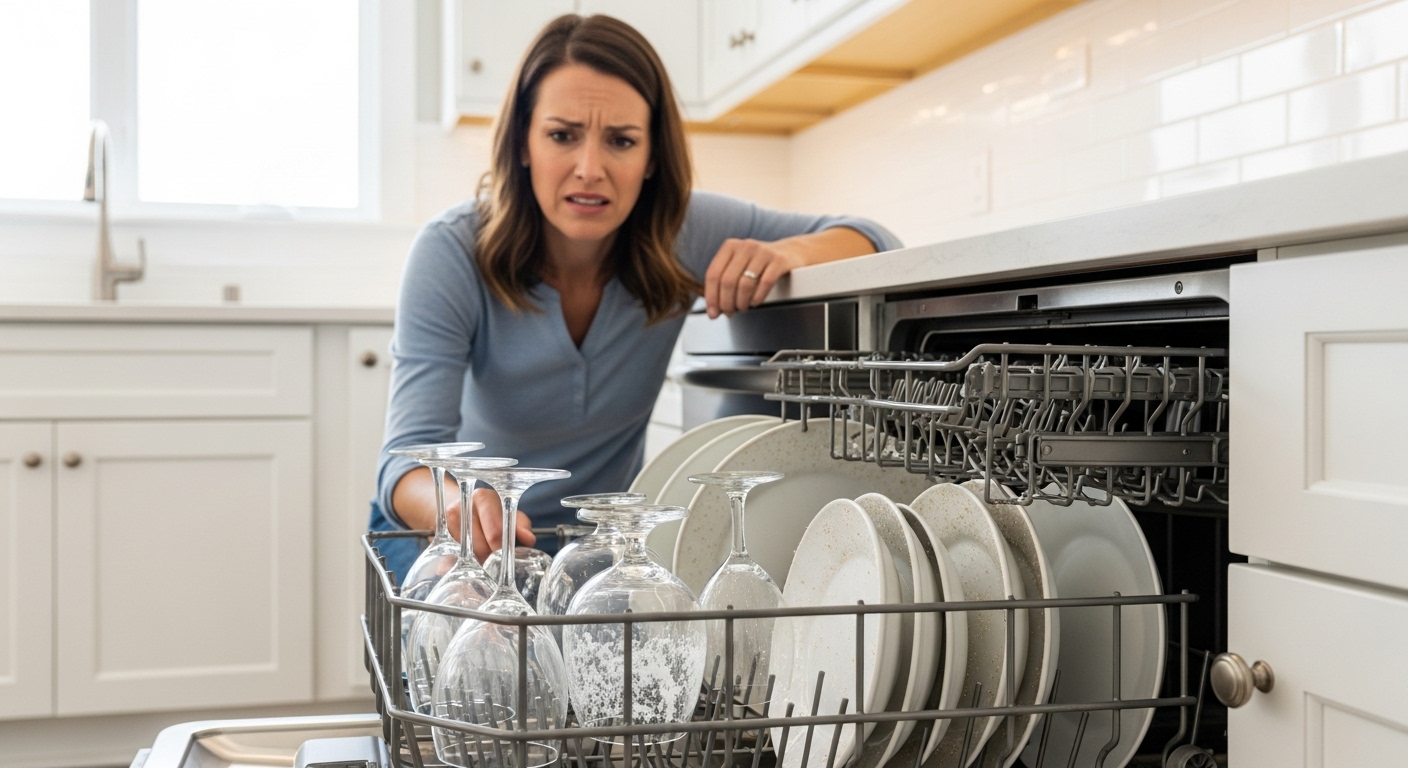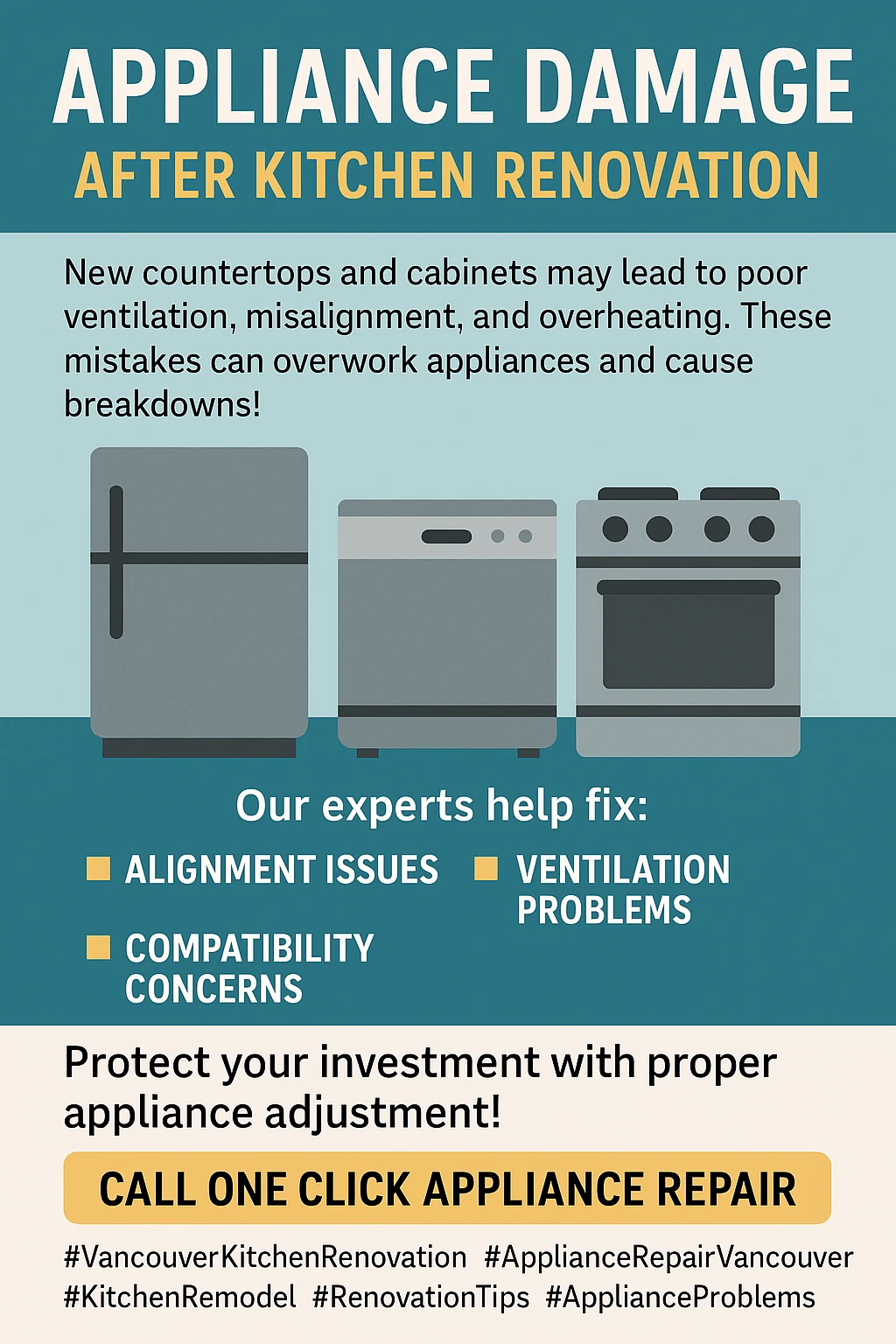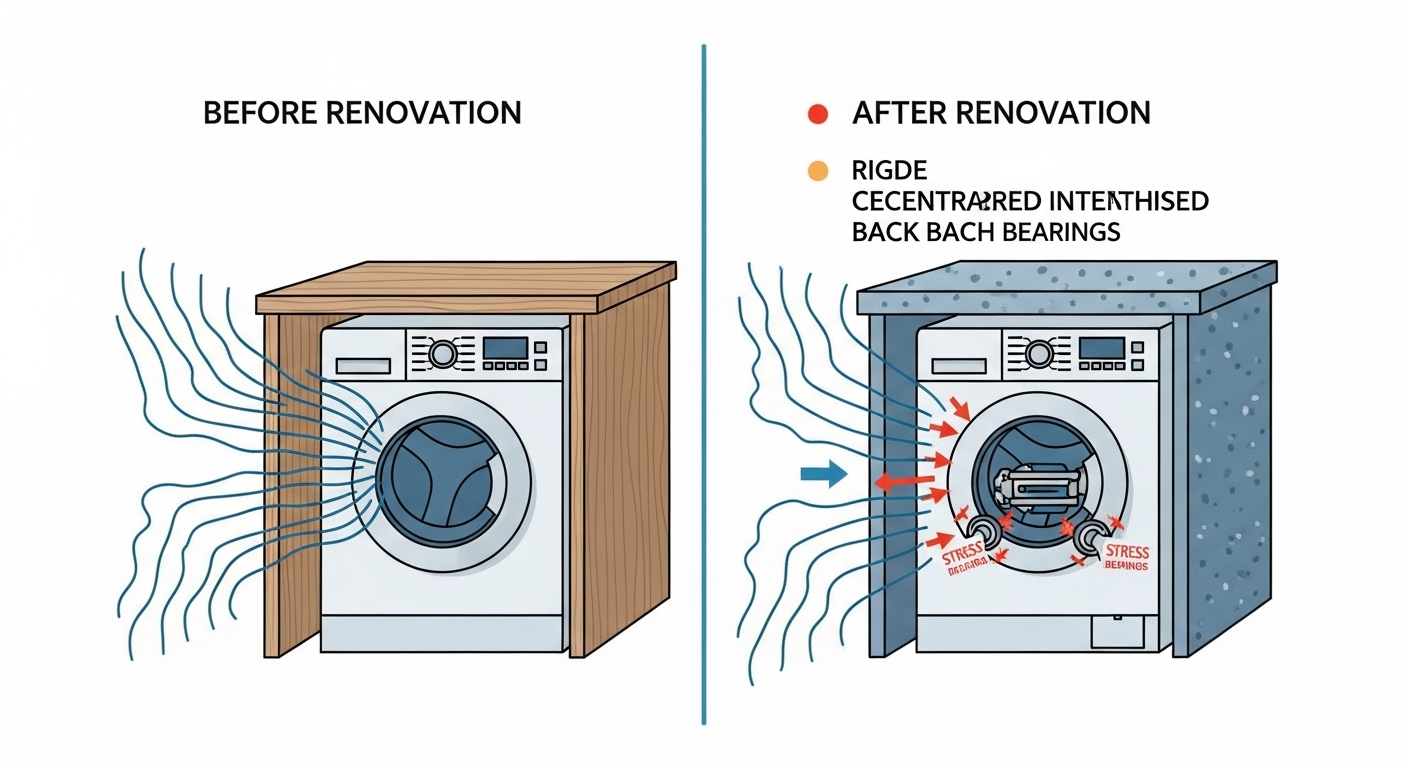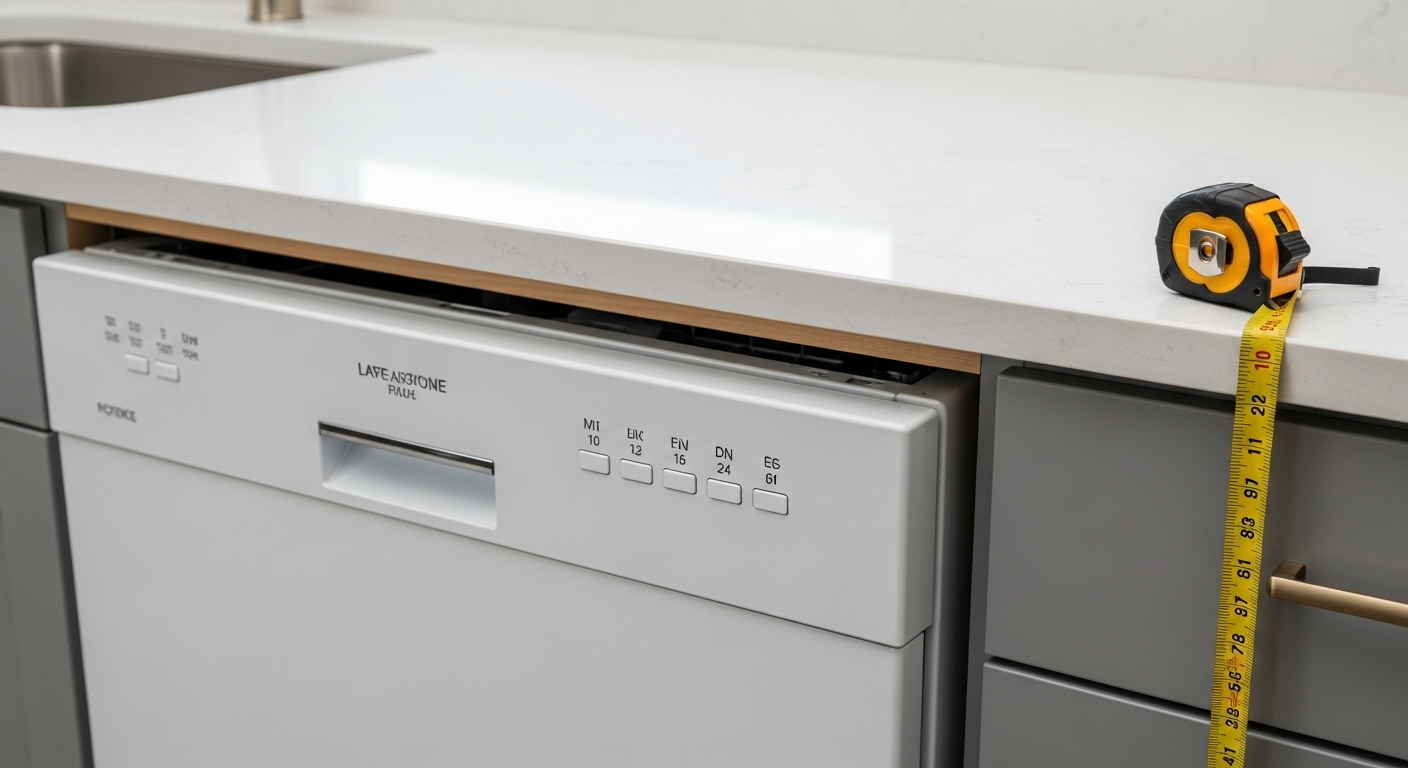Tired of your brand-new kitchen renovation turning into an appliance graveyard? Here’s the truth about why those gorgeous new countertops and cabinets are secretly sabotaging your existing appliances – and the surprisingly simple adjustments that could save you thousands in premature replacement costs.
Picture this nightmare scenario: you’ve just dropped $30,000 on the kitchen renovation of your dreams, complete with stunning quartz countertops and custom cabinetry that would make any design magazine jealous. Everything looks absolutely perfect until three months later when your trusty dishwasher starts leaving a gritty film on your dishes, your refrigerator begins making concerning grinding noises, and your washing machine decides to choreograph its own personal earthquake during every spin cycle. What seemed like coincidental bad luck is actually the predictable result of a renovation phenomenon that most homeowners never see coming – the appliance age gap crisis.

The harsh reality is that mixing old appliances with brand-new kitchen infrastructure creates a perfect storm of mechanical stress, environmental changes, and installation incompatibilities that can literally shake your appliances to death. When you install rigid new cabinetry systems and dense stone countertops around appliances designed for flexible wood cabinets and laminate counters, you’re fundamentally changing how vibration travels through your kitchen. That seemingly minor change transforms your beautiful new kitchen into an echo chamber that amplifies every mechanical stress your aging appliances produce, creating a feedback loop of destruction that manufacturers never anticipated.
Vancouver homeowners face particular challenges because our unique housing stock – from heritage homes with century-old infrastructure to modern condos with shared walls – amplifies these problems in ways that other markets simply don’t experience. The combination of our coastal humidity, seismic building codes, and dense urban development patterns creates conditions where appliance placement mistakes don’t just affect individual units but can impact entire building systems. Understanding how to navigate these challenges isn’t just about avoiding repair bills; it’s about protecting substantial investments while ensuring your daily routines aren’t disrupted by completely preventable appliance failures.
Key Outtakes:
- Modern appliances are typically 20-30% larger than vintage models, creating immediate installation and clearance issues in older kitchens that can require expensive cabinet modifications
- Unbalanced loads and improper appliance leveling cause about 70% of vibration problems in Vancouver homes, making proper post-renovation alignment absolutely critical for appliance longevity
- New rigid cabinetry systems and stone countertops act as vibration amplifiers rather than absorbers, transferring mechanical stress directly to aging appliance components that weren’t designed to handle concentrated force
- Kitchen renovations change thermal microclimates around appliances by altering air circulation patterns, causing rubber gaskets and seals to degrade 30-40% faster than normal operating conditions
- Professional anti-vibration solutions and proper post-renovation adjustments can extend appliance lifespans by 3-5 years while preventing up to 85% of renovation-induced failures

The Hidden Science Behind Renovation-Induced Appliance Failure
The physics behind why new countertops and cabinets destroy old appliances is surprisingly straightforward once you understand the mechanical principles involved. When your kitchen contained flexible wood cabinetry and laminate countertops, those materials acted like shock absorbers that dissipated vibrational energy gradually throughout the space. Your washing machine’s 1,200 RPM spin cycle generated significant energy, but that energy got absorbed by the surrounding flexible infrastructure rather than being concentrated back into the appliance itself. This natural dampening system protected internal components from the kind of cyclical stress that causes premature bearing wear and mounting system failure.
However, when you install modern rigid cabinetry systems made from engineered materials and top them with dense stone countertops like granite or quartz, you’ve essentially turned your kitchen into a resonance chamber. These rigid materials don’t absorb vibrational energy – they reflect it and amplify it, creating what engineers call “harmonic reinforcement.” Every vibration your appliances produce gets bounced back with increased intensity, subjecting aging components to stress levels they were never designed to handle. The result is accelerated wear on everything from dishwasher pump motors to refrigerator compressor mounting systems.

The problem becomes exponentially worse in Vancouver’s housing market because roughly 65% of households live in multi-story buildings where structural vibration doesn’t remain contained within individual units. When your newly renovated kitchen starts amplifying appliance vibrations, those forces travel through building frameworks and affect neighboring units, creating cascade effects that can impact entire building systems. Heritage homes present particular challenges because their flexible wood construction was designed to accommodate natural settling and movement, but when you introduce rigid modern kitchen components, you create stress concentration points that can affect structural integrity over time.
What makes this phenomenon particularly insidious is the delayed onset of problems. While mechanical incompatibilities between old and new systems exist immediately after renovation, the cumulative damage takes months to manifest as visible appliance problems. By the time homeowners notice issues, the root cause – the renovation itself – seems too distant to be relevant, leading most people to blame age or manufacturing defects rather than environmental changes they unknowingly introduced.
The thermal component of this problem deserves equal attention because kitchen renovations frequently alter air circulation patterns around appliances in ways that create hidden stress factors. When new cabinetry reduces clearance around refrigerators or changes ventilation pathways around dishwashers, it forces these appliances to operate in thermal conditions different from their original design specifications. Even 5-10 degree increases in ambient operating temperature can reduce appliance component lifespan by years, particularly for rubber seals and gaskets that are temperature-sensitive.
Dimensional Mismatches: When Modern Infrastructure Doesn’t Fit Legacy Appliances
One of the most immediate and costly problems Vancouver homeowners encounter involves dimensional incompatibilities between existing appliances and newly renovated kitchen infrastructure. Today’s appliances boast wider designs, which can create installation challenges in an older kitchen, and even if you manage to squeeze the appliance into the space, you might find yourself battling limited clearance issues that create ongoing operational problems. These dimensional mismatches force appliances into compromised positions where doors can’t open fully, ventilation becomes restricted, and mechanical components operate under continuous stress.

The clearance issue extends beyond simple width and height considerations to include depth incompatibilities that most homeowners don’t anticipate. Heritage kitchens in Vancouver were typically designed around appliances that were 6-8 inches shallower than modern standards, meaning that when homeowners install new deeper countertops and cabinetry, existing appliances often end up positioned incorrectly relative to surrounding infrastructure. This creates situations where refrigerator doors interfere with cabinet hardware, dishwasher fronts don’t align with new cabinet faces, and range doors can’t open fully without hitting new cabinet installations.
Counter height represents another critical dimensional factor that renovation projects frequently overlook. When homeowners replace countertops while keeping existing cabinets, thickness variations between old and new countertop materials can create height differentials that affect how appliances align with surrounding cabinetry. A difference of even 1-2 inches in counter height can prevent dishwashers from sliding properly under countertops or create gaps that allow moisture infiltration and pest entry.
The leveling challenge becomes particularly acute when renovation work changes flooring materials or subfloor configurations. Excessive vibrations and rattling are clear signs that appliances aren’t properly leveled, and shaking will not only lead to future mechanical issues but can also damage surrounding walls and floors. When contractors install new tile, hardwood, or other flooring materials during renovation, they create subtle height variations that require appliance releveling, but this adjustment is frequently overlooked when renovation crews focus on new installations rather than existing appliance integration.
Vancouver’s seismic building codes add another layer of complexity to dimensional compatibility issues.


